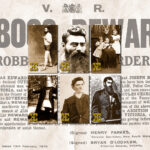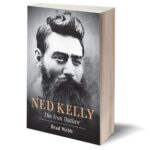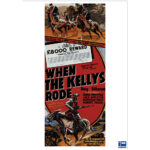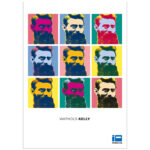The Story of Ned Kelly
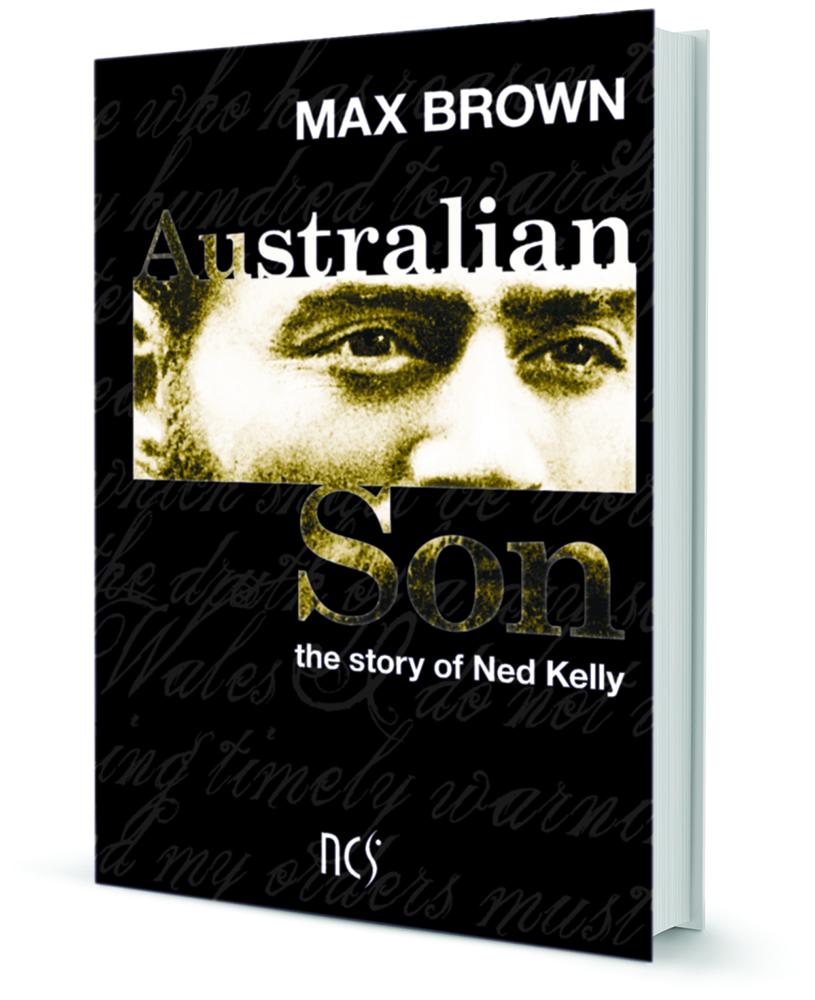 A century and one-third after his death, Ned Kelly’s not forgotten, and it’s hard to believe that Australians will ever forget him. In his own lifetime he passed into folklore, as Max Brown makes clear, so where is he now? This is not an easy question, but wherever he is, Max Brown’s book is part of the answer. When Ned was alive, and police in two states were trying to find him, he was regularly labelled a criminal, murderer, desperado, villain, et cetera. Respectable society condemned him because they had to. We might say they knew no better. The amazing thing about Ned and his gang, though, is that they convinced a great many people that justice might mean injustice, and vice-versa. Ned was hanged in 1880. A lifetime later, with the world recovering from World War 2, Australian Son was written. Decades later, Max revised it but didn’t live to see this later version, which keeps the tradition alive. Tradition? Yes. The famous bushranger, from the poorest of poor families, has given rise to a persisting idea that the apparatus of justice may pursue the ends of injustice, and be meted out to those who, by their own sense of what’s right, deserve it least.
A century and one-third after his death, Ned Kelly’s not forgotten, and it’s hard to believe that Australians will ever forget him. In his own lifetime he passed into folklore, as Max Brown makes clear, so where is he now? This is not an easy question, but wherever he is, Max Brown’s book is part of the answer. When Ned was alive, and police in two states were trying to find him, he was regularly labelled a criminal, murderer, desperado, villain, et cetera. Respectable society condemned him because they had to. We might say they knew no better. The amazing thing about Ned and his gang, though, is that they convinced a great many people that justice might mean injustice, and vice-versa. Ned was hanged in 1880. A lifetime later, with the world recovering from World War 2, Australian Son was written. Decades later, Max revised it but didn’t live to see this later version, which keeps the tradition alive. Tradition? Yes. The famous bushranger, from the poorest of poor families, has given rise to a persisting idea that the apparatus of justice may pursue the ends of injustice, and be meted out to those who, by their own sense of what’s right, deserve it least.
Background
Max Brown passed away in September 2003. Toward the end of his life he prepared this revised and extended version of his classic account of the Kelly gang, Australian Son. Max, like many who emerged from the chaos and destruction of World War II, entered the postwar world in an immensely positive frame of mind. A new world had to be created which would be better, and wiser, having learned from the mistakes of the past. Before long this positive view of the future had been overwhelmed by the Cold War, but not before certain creative achievements had taken place.
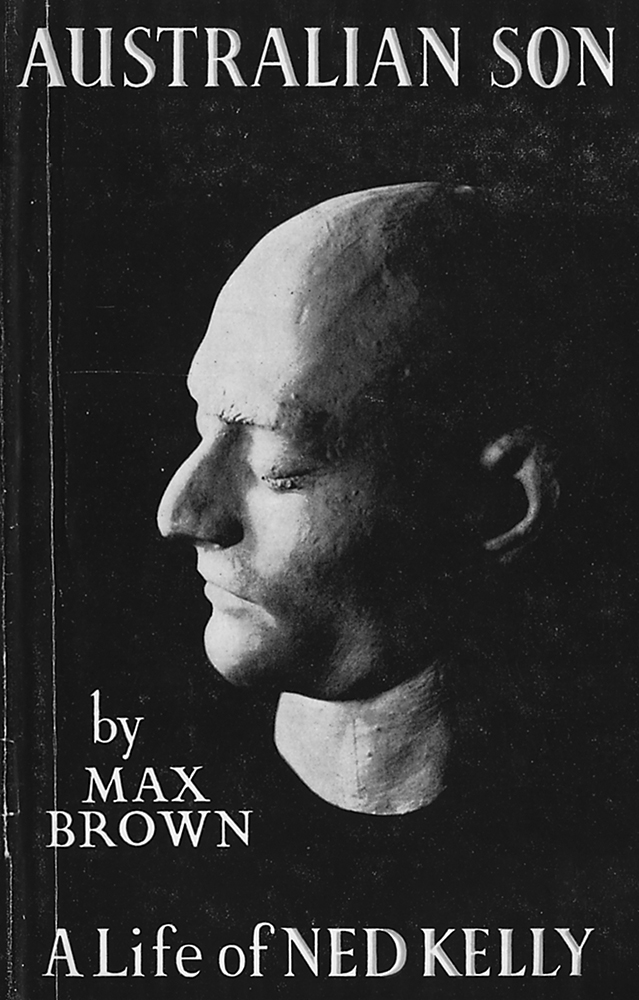 Max devoted a year of his time and most of his savings to a period of research into the life and times of the Kelly Gang. He wrote Australian Son in 1948. The book has long been recognised as the classic account of a turbulent, formative period in the history of Australia. Since then, a number of other writers have produced books on the Kelly outbreak, adding to the available knowledge and the variety of possible viewpoints on the celebrated events.
Max devoted a year of his time and most of his savings to a period of research into the life and times of the Kelly Gang. He wrote Australian Son in 1948. The book has long been recognised as the classic account of a turbulent, formative period in the history of Australia. Since then, a number of other writers have produced books on the Kelly outbreak, adding to the available knowledge and the variety of possible viewpoints on the celebrated events.
Max decided to bring his early classic up to date; those who know his first account, or its 1956 revision, will find much that is familiar in this version of the story, and quite a lot that is new. IronOutlaw.com are proud to play their part in keeping alive a story, and a telling of that story, which should never be forgotten. The following portrait of Max Brown by editor and author Chester Eagle was written for Max’s latest book on Charmian Clift and George Johnston entitled Charmian & George:
Max Brown was a contemporary of George Johnston, though he outlasted him by a third of a century. Both went through World War 2, Johnston as correspondent extraordinaire, Max in the RAAF, after which they worked together on the Melbourne Argus and the Australasian Post. George went to Sydney, together with Charmian, to London, then the Greek islands, before their return to Australia, in a personal evolution fascinating to readers ever since. Max journeyed along another road.
He took a year off to research Australian Son, his classic life of Ned Kelly, he wrote novels, he worked on papers from Sydney to Perth, and numerous places in between. He was a great reader and things he read stayed with him, hence the extraordinary breadth of references that surface in his writing, surprising the reader before they disappear. His prose is naturally direct, with the unexpected always lurking. He was scornful of writers he considered elitist, and the basis for this was his own remarkable breadth of sympathy, particularly for those whose lives were lived out of sight of cultural arbitrators, as can be seen by reading the sketches in his Buttered Toast (1999). Max died in Ballarat in September 2003.
The Book
Australian Son, the first modern account of the Kelly outbreak, was originally published in 1948. Works prior to this tended to fall into bias categories either for or against. Max Brown’s book was the work of an open-minded outsider who’d put time and effort into studying the events of the Gang’s lives on the ground, in the caves, the ranges and the rough dwellings – wherever the incidents occurred. Published by Georgian House, Melbourne, 1948; revised edition, Georgian House, 1956; Angus and Robertson Australian Classics, 1981; followed by this final revision, published in softcover, 2005 and reprinted in hardback, 2013 by Network Creative Services Pty Ltd.
The book has featured prominently in later examinations of the story by authors and historians such as Ian Jones, Keith McMenomy, and John McQuilton, among others. Max Brown, having influenced other writers, had read their work and felt that he needed to incorporate later discoveries (some his own, some by associated researchers) and later viewpoints on the events in his own revised account. This revision includes The Jerilderie Letter (whose title was first coined by Max), published in the original 1946 edition of Australian Son. The book also contains the Cameron Letter, reprinted from J. J. Kenneally’s 1923 book The Inner History of the Kelly Gang.
The Manuscript
Before Max Brown died in September 2003, he had spent the good part of the last ten years rewriting his 1948 classic Australian Son. Eager to reintroduce it into the twenty first century, Max had sourced new material and updated many of this fine theory’s and findings. His manuscript, however, was still in a million pieces when he suffered a debilitating stroke. Upon his death, Max’s close friend Chester Eagle took it upon himself to undertake the mammoth task of comparing the five surviving manuscripts (including the one’s Max had given Brad Webb, Chester and Ian Jones) page by page to determine which sections were the most recent.
After months of work the end result was then scanned using OCR software. As Max had originally used an ancient word processor (whose disks went missing during the removal of his belongings from Stockton, New South Wales to Sebastopol near Ballarat, Victoria) the scanned pages were converted into a Microsoft Word document which was carefully reread by Chester – who compared the scanned page to the original, ensuring a perfect transfer. The result was released in 2005 by Network Creative Services to commemorate 125 years of the death of Ned Kelly. In 2013, Max’s masterpiece was re-released in both a hardback and digital edition.
Download: Chapter One (PDF)

